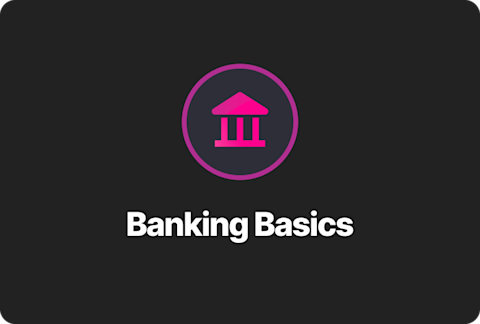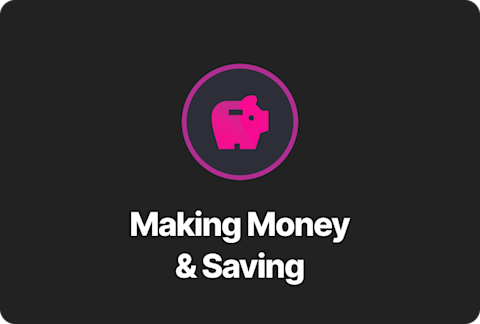Investing 101: Terms You Need to Know

Portfolio, profit, price to earnings ratio…oh my! If you’re just getting started with investing and feeling overwhelmed by unfamiliar terms, don’t worry—you’re not alone. Many people feel like they’re trying to learn a foreign language when they first begin investing.
To help give you a nice jumpstart, we rounded up some of the most common investing terms in this glossary. Once you learn some of the essential lingo, you’ll feel a lot more confident as you continue to educate yourself on the world of investing.
Annual Percentage Yield (APY)
When you place money into an investment vehicle like a savings account, you can earn interest. The amount of interest you’ll earn in a year is known as the annual percentage yield, but is more commonly referred to as the APY. The APY often represents the amount of interest you’ll earn on a fixed investment including compound interest (we’ll explain what compound interest is shortly).
Asset
An asset is something that currently has economic value or may have value in the future, like a house, a car, or a stock.
Asset Allocation
Asset allocation is the process of deciding where to put money in the market with the goal of balancing risk with reward.
Bear Market
A bear market is a market in which share prices decline for a consistent period of time.
Bonds
Bonds are a type of security (skip ahead to “securities” for more insight) you can invest in that offer a fixed rate of return. Companies and governments can issue bonds and essentially in exchange from borrowing money from you, you’re offered a set amount of interest by the bond issuer.
Bull Market
A bull market is a market in which share prices rise or are expected to rise in the short-term.
Broker
A broker is a company or individual that buys and sells securities, such as stocks or bonds, on behalf of clients.
Capital Gains
The money an investor makes when they sell an investment for a higher price than they paid is known as capital gains. Capital gains are taxed based on how long the investment was held for (this can be short-term or long-term capital gains).
Compound Interest
Compound interest is the interest you earn on the money you’ve saved and the interest you earn. For example, let’s say you invest $100 and in a year, see a return of 10% or $10. Now your investment value is $110. If you earn 10% again the next year, your value is $121. That growth process is due to the power of compound interest.
Cryptocurrency
Cryptocurrency is a decentralized digital currency. Unlike the United States dollar, it is not controlled by a single central authority like the government. It runs on a network of computers, often called a blockchain, that keeps track of all cryptocurrency transactions.
Diversification
The practice of not putting all your eggs in one basket—or spreading investments across different assets or industries with a goal of reducing risk of losing money—is called diversification.
Dividend
A company’s profits can be paid to current shareholders (or the people that own their stocks) in the form of a dividend.
Dividend Yield
The dividend yield is the percentage of profit you get for every share owned. If you hold $100 in stock and the dividend yield is 5%, the company will pay you $5.
Exchanged-Traded Funds (ETFs)
“Baskets” of securities that contain a mix of assets like stocks, bonds, commodities, or currencies are called exchange-traded funds, but are better known as ETFs.
Index
Indexes measure the performance of a group of assets and are commonly used in the stock market to provide investors with benchmarks surrounding market performance. To help illustrate what an index is, we’ll look at one of the best-known indexes—the S&P 500. The S&P measures the performance of the 500 largest stocks in the U.S. market.
Index Fund
An index fund is a portfolio of securities specifically chosen to match the makeup of a market index, such as the S&P 500 or Nasdaq. Index funds can either be ETFs or mutual funds.
Initial Public Offering (IPO)
When a company transitions from a private to a public corporation by offering shares to the public for the first time this process is called an initial public offering (IPO).
Investment
An investment is something you buy with the goal that it will increase in value over time. Investing in the stock market gives you a chance to grow your money.
Market Capitalization
The total dollar market value of a company’s outstanding shares is known as market capitalization. You get this by multiplying the market price per share by the number of outstanding shares.
Market Order
Instructions from an investor to their broker to buy or sell a security immediately is a market order.
Mutual Fund
A mutual fund is a professionally managed fund that pools money from multiple investors to invest in a variety of securities, including stocks and bonds.
Portfolio
All of someone’s investments, including stocks, bonds, commodities, cash, and other assets make up their investment portfolio.
Price to Earnings Ratio (P/E)
The price to earnings ratio (P/E) is a method that determines a company’s value by comparing its stock price to its actual earnings per share. A high P/E may indicate that a stock price is overvalued, while a low P/E could indicate that it’s undervalued.
Profit
The difference between the amount of money you made on something and the amount of money something cost is your profit.
Risk
In investing, risk refers to the chance that an investment could decrease in value. Higher risk investments usually have a greater potential for loss (and gain). Lower risk investments usually have a lower potential loss (or gain).
Securities
A financial asset that has value and can be bought, sold, or traded is referred to as a security in the world of investing.
Share
The smallest unit of a specific company’s stock is a share. For example, someone may say “I own 100 shares of Nike.”
Stock
A security that represents ownership in a piece of a public company is a stock. Stock refers to the company that issues it. People will often say “I own Nike stock.” (P.S. you can invest in stocks with Step!)
Symbol
Also known as a ticker, a symbol is a set of characters — usually letters — that represent publicly traded companies, like NFLX (Netflix).
Volatility
Volatility describes how quickly and by how much a security can increase or decrease in price over a particular period of time. An investment that is very volatile can have large price changes over a short period of time.
The information presented herein is for educational purposes only and does not constitute investment advice or an offer to buy or sell any security, investment or other product. See our additional stock and crypto risk disclosures.








